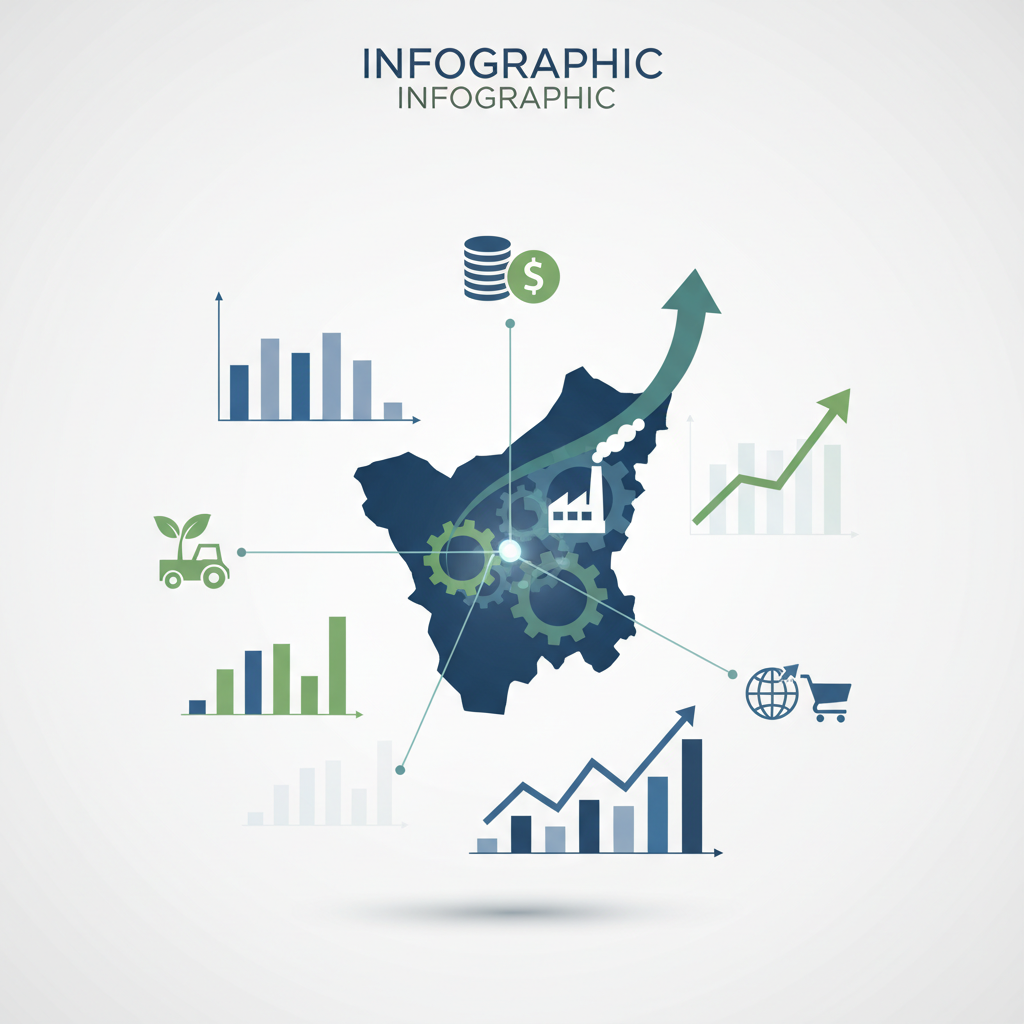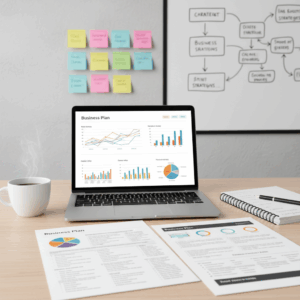Definition and calculation of GDP
The Gross Domestic Product (GDP) is a macroeconomic magnitude that measures the total monetary value of final goods and services produced in a country.
It is calculated over a specific period, usually a year or a quarter, and includes the production of public, private, or foreign companies within national borders.
Concept of Gross Domestic Product
GDP represents the total sum of national economic production, regardless of the source of capital, as long as the activity occurs within the country's territory. It is key to understanding the economy.
Understanding GDP allows us to assess a country's size and economic health, reflecting its productive capacity and level of activity over a specific period.
This indicator is also essential for comparing different periods and nations, identifying trends and differences in economic performance.
How GDP is calculated
GDP is calculated by adding the monetary value of all final goods and services produced within the country in a given period, avoiding double counting.
There are three main approaches to its calculation: the expenditure approach, the income approach, and the production approach, each providing a different perspective.
The expenditure approach includes consumption, investment, public spending, and net exports, while the income approach includes wages, rents, and taxes net of subsidies.
Importance of GDP for the economy
He GDP It is a key indicator that reflects the health and size of a country's economy. It is used to measure economic performance over a given period.
Their analysis helps identify whether an economy is growing or facing difficulties, helping inform public and private policy decisions that influence social well-being.
Economic growth indicator
GDP shows how economic output increases or decreases, representing a country's expansion or contraction. A growing GDP indicates economic prosperity.
This growth is usually accompanied by increased employment, investment, and consumption, all of which are essential elements for development and improving the population's standard of living.
Conversely, a drop in GDP can signal a recession, reduced employment, and economic hardship that requires immediate attention for recovery.
Use in international comparisons
GDP is used to compare the size and efficiency of economies across countries, facilitating analysis of their global positioning.
These comparisons allow for the identification of countries with emerging or developed economies, in addition to guiding investment, trade, and global policies.
GDP per capita is especially useful for measuring average well-being, showing differences in quality of life among diverse populations.
Relationship with employment and consumption
GDP growth has a direct impact on employment, as increased production demands more labor and generates new job opportunities.
It also influences consumption, as a high GDP usually translates into higher disposable income, increasing household spending capacity.
This relationship creates a positive cycle where increased employment and consumption stimulate the economy, reinforcing growth and social development.
Types of GDP
The Gross Domestic Product (GDP) can be presented in different forms that allow for a more precise analysis of the economy, adjusting the value to different conditions.
The main types are nominal GDP, real GDP, and GDP per capita, each with characteristics that facilitate interpretation according to the economic context.
Nominal GDP, real GDP and GDP per capita
He Nominal GDP It reflects the value of goods and services produced during the period at current prices, without adjusting for inflation. It is useful for immediate data.
He Real GDP adjusts the nominal value by eliminating the effect of inflation, offering a more accurate measure of real economic growth over time.
He GDP per capita It divides the total GDP by the country's population, providing a rough indicator of the average income level and economic well-being of its inhabitants.
Uses and applications of GDP
He GDP It is essential to measure a country's economic activity, offering a clear view of its production and development over a period.
Furthermore, it serves as an essential reference for the implementation of policies that seek to improve social well-being and economic stability.
Measuring national economic activity
GDP quantifies the total value of goods and services produced within a country, reflecting its economic capacity and productive dynamics.
This measurement is key to monitoring changes in the economy, allowing us to detect expansions or contractions that affect society.
Thanks to GDP, we can evaluate the effectiveness of economic sectors and direct resources toward priority areas to boost growth.
Planning of economic and social policies
GDP analysis guides the design of public policies focused on promoting sustainable development and improving quality of life.
Governments use GDP to set targets for investment, employment, and the distribution of social resources, ensuring efficient management.
Thus, GDP allows economic strategies to be adjusted according to changes in the national and international context, ensuring stability.






